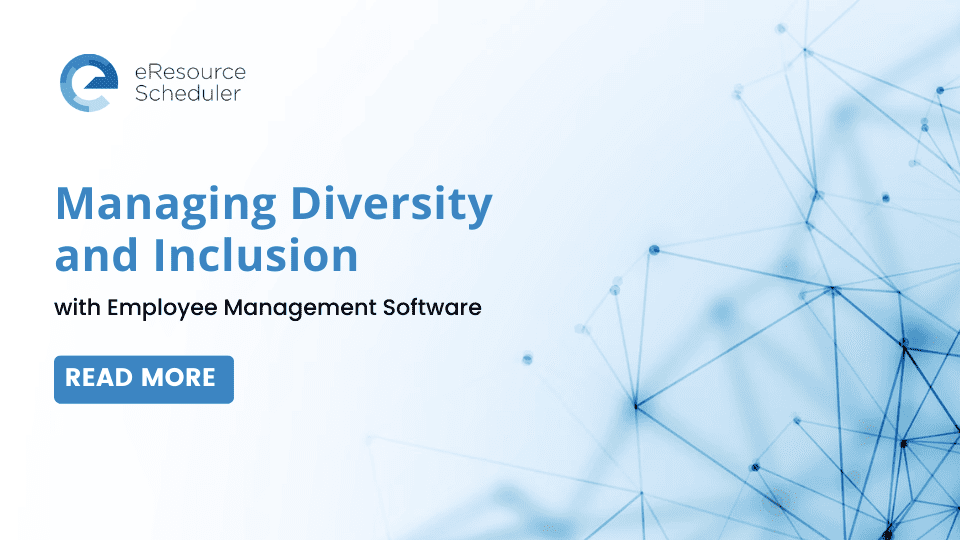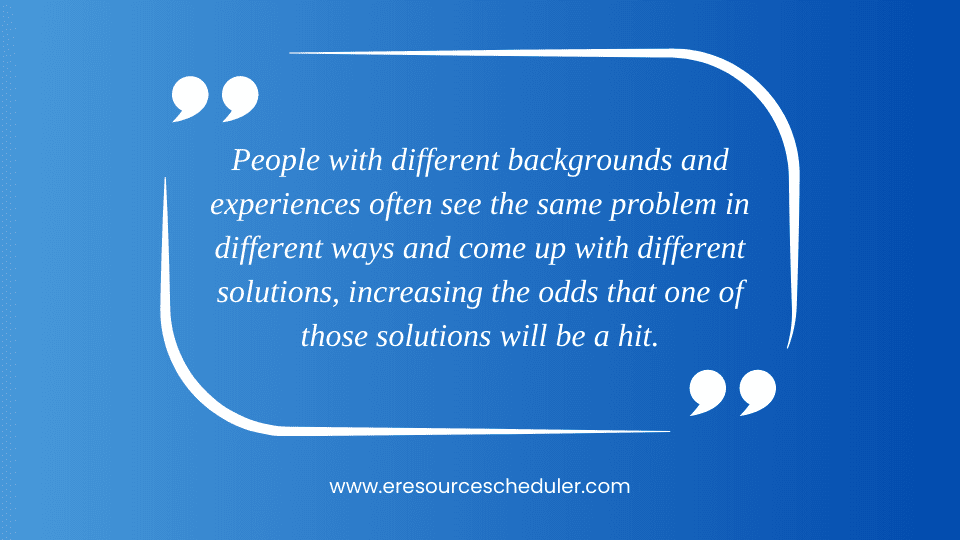
According to the Pulse of the Profession report, 88% of project professionals say having diverse project teams increases value. Diversity, in the form of age, nationality, culture, gender, experience or any other criteria plays an important, but frequently overlooked, role in project success.
Investing, managing, and fostering diversity and inclusion is the key to achieving a competitive-edge in this post-pandemic, digitally intertwined work environment.
Learn why diversity and inclusion are important in project management, get tips on how to foster them, and how employee management software can help.
What do diversity and inclusion actually mean? Diversity refers to all the traits that make a person unique. It also represents the make-up of an identity — like a team’s diversity is based on how many different characteristics and experiences the members bring to the table.
Inclusion is about how varying perspectives and opinions are valued and integrated into the environment. Do the diverse employees actually feel safe and comfortable enough to voice their opinions? Diversity and inclusion are therefore interconnected. In a workplace, diversity and inclusion makes people feel valued, respected, and supported.
Studies, time and time again, have shown that diverse teams and inclusive workplaces have constantly outperformed their competitors. Organisations that value and support diversity are better in their response to challenges, able to surpass customer requirements, and more equipped to deal with overall stress.
Diversity and inclusion also leads to:

Fostering and practising diversity and inclusion is beyond creating posters, taglines, and hashtags. It has to be part of the cultural fabric to deliver positive results. Namesake “diversity and inclusion” themes can instead brew conflict and confusion.
Practices that can help instil and sustain a diversified and inclusive culture include:
One of the best ways to go about creating and sustaining a diverse and inclusive work culture is by leveraging the help of technology. A resource management software is a “one-stop-solution” for managing these beliefs.
An advanced resource management software accounts for all resources within an organisation. As a project manager you have enterprise-wide visibility on all the talent you have at your disposal, regardless of their location. Alongside names, you will have insight into their skill-set, work preferences, country labour laws, availability and capacity —- everything that will aid you in identifying the right resources for billable tasks. This again reduces the chances of an employee feeling discriminated against by not getting the right assignments.
Employment management software also prevents workers from being overburdened. The capacity metre and utilisation metrics ensure work is distributed fairly and evenly.
The enterprise-wide visibility further strengthens communication and collaboration, because all resources can see the role they are playing and how their efforts make a difference. It breaks down individual silos that typically result from location or cultural disparities. Overall, the majority of team members feel valued, respected, and part of the work community.
Employees, through a resource management platform, have the ability to apply for certain projects and roles that are of keen interest to them. Managers will be notified about employee preferences when they are assigning jobs and this scheduling flexibility allows everyone to feel that their lines of career interests are being taken care of.
Finally, employee management software allows managers to track project metrics in real-time. The data transparency will help you make data-based on what’s working and what needs tweaking. For instance, metrics such as time taken per task can identify if a resource is facing an issue. Managers can therefore promptly reach out to understand the problem. This will again make employees feel like they are being supported and taken care of.
The link between ROI and diversity and inclusion is undisputable. By neglecting inclusion and diversity, your company is simply walking away from money on the table. What can you do to start prioritising diversity and inclusion in your workplace?
We’ll tell you. Invest in an employee management software like eRS.
eRS is equipped to help you understand where and who all your employees are, assign them projects per their preference and skill-set, and then track their performance. The centralised and visual dashboard allows all members to communicate and collaborate easily. The software further breaks down silos and recognises all the team members, regardless of their background or location. Finally, eRS’s robust metrics equip managers to make swift decisions, so “too many cooks don’t spoil the broth.”
Let eRS support your diversity and inclusion endeavours and help your organisation stay ahead of the game. Our 14-day free trial can be started immediately.
Plan Smarter. Schedule Faster.
Join thousands already using eResource Scheduler to align teams, time, and tasks seamlessly.